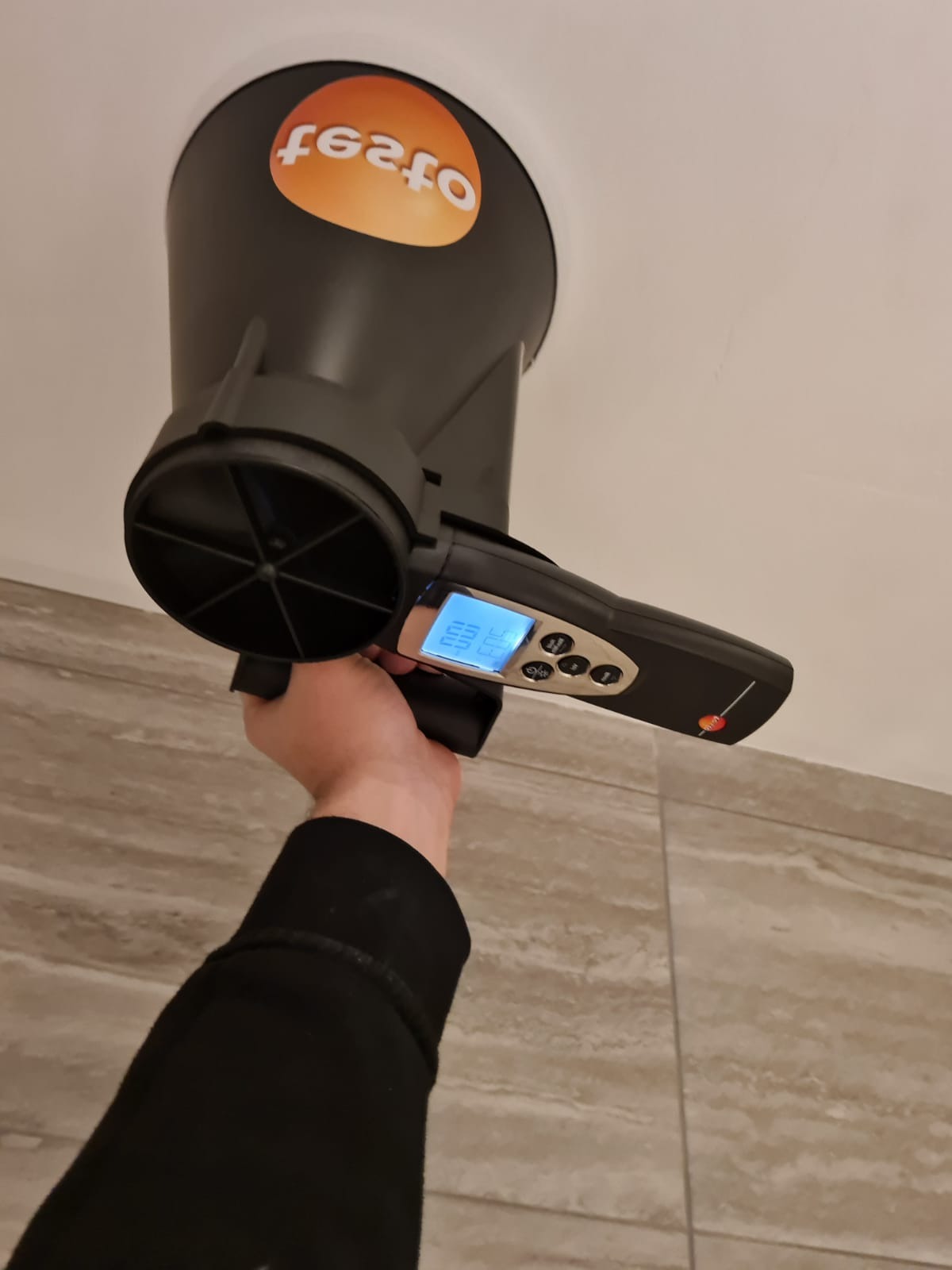
VentTesting
Building Compliance Testing Limited can provide you with a fast and cost effective Domestic Ventilation Commissioning and Air-flow Testing across the UK for Part F Building Regulation compliance.
 Vent Testing
Vent Testing
Ventilation testing is a crucial requirement to ensure compliance with Part F of The Building Regulations. As homes become increasingly airtight to enhance energy efficiency, proper air flow is vital. Ventilation serves the primary purpose of replacing polluted or stagnant indoor air with fresh air. With improved construction standards, increased insulation, and reduced air leakage, pollutants can accumulate, posing potential harm to both the building and its occupants. Efficient ventilation systems are essential to reduce these pollutants, which can vary significantly in industrial and commercial properties compared to domestic ones.
In domestic settings, moisture is a significant pollutant, with the average family producing about 6 liters of moisture per day. This moisture promotes mold growth and can affect the health of occupants. Part F of the Building Regulations (2010) introduced the requirement to test the practical performance of ventilation systems in new dwellings.
Ventilation testing ensures a balance between airtightness, energy efficiency, and proper air exchange, creating a healthier living environment. In addition to Part F, various other building regulations, such as Approved Document A (Structural Safety), Approved Document B (Fire Safety), Approved Document J (Combustion appliances and fuel storage systems), Approved Document L1A (Conservation of fuel and power for new dwellings), and Approved Document M (Access to and use of buildings), must be considered when dealing with ventilation systems.
Ventilation testing encompasses air-flow testing for extractor fans, often found in toilets, bathrooms, and kitchens, to measure their air extraction capacity. Commissioning involves more complex ventilation systems, such as Mechanical Ventilation Heat Recovery (MVHR), which require precise balancing to ensure each room receives the correct amount of supplied or extracted air.
These tests demand the use of UKAS-calibrated equipment and must be conducted by engineers registered with a recognized scheme. Before testing, our engineers conduct a thorough pre-test inspection of the ventilation system, assessing duct runs, terminals, and functionality. Building Compliance Testing offers comprehensive services from design reviews to site inspections, pretesting, diagnostics, site management, training, and education, ensuring that ventilation systems meet the necessary standards and regulations.
Before conducting a ventilation test, it is crucial to identify the type of system in place, with four main categories:
- Intermittent Extract Fans and Background Ventilators
- Passive Stack Ventilation (PSV)*
- Continuous Mechanical Extract Ventilation (MEV)
- Continuous Balanced Mechanical Ventilation and Heat Recovery (MVHR)
The assessment of ventilation is carried out using an anemometer, measuring air flow rates in liters per second (l/s). Different rooms require varying flow rates based on their purpose and the equipment they contain. For instance, a toilet typically needs an intermittent extract ventilation rate of 6 l/s, while a kitchen without a cooker hood may require 60 l/s. An office space with a photocopier might necessitate an extract rate of 20 l/s.
A certificate is generated, detailing the Air Flow Rate, which can be submitted to building control as part of the overall building compliance process.
Ventilation tests conducted by Building Compliance Testing employ UKAS-calibrated equipment and are overseen by engineers registered with a recognized scheme. All Building Compliance Testing engineers have successfully completed the NICEIC Domestic Ventilation System Course.
*Ventilation System 2 does not require testing.
The tests must be undertaken using UKAS calibrated equipment and should be conducted by an engineer registered with a competent scheme.
Our Engineers will always carry out a pre-test inspection of the ventilation system, including duct runs, terminals and test all functionalities.
design reviews – site inspections – pretesting – diagnostics – site management training and education
Frequently Asked Questions
What Ventilation System have I got installed, and why?
- If your dwelling has extractors within sanitary areas, wet areas and the kitchen that operate
intermittently, or is triggered by a light, PIR or humidity switch and has trickle vents installed in your
external windows, it is likely you have a System 1 Intermittent Extract and Natural Ventilation. A System 1 is
designed with an Air Tightness greater than >4.00m-3.h.m-2 at 50 Pascals to operate efficiently. - If your dwelling has extractors within sanitary areas, wet areas and the kitchen that operate
continuously and has trickle vents installed in your external windows, it is likely you have a System 3
Mechanical Extract Ventilation. A System 3 is designed with an Air Tightness <4.00m-3.h.m-2 at 50
Pascals to operate efficiently. - If your dwelling has ventilator terminals in all rooms and has a central controller unit, and no trickle vents,
it is likely you have a System 4 Mechanical Extract with Heat Recovery Ventilation. A whole dwelling
ventilation system is designed with an Air Tightness <3.00m-3.h.m-2 at 50 Pascals to operate efficiently. - It should be noted the lower the dwellings Air Tightness, the less uncontrolled/ natural ventilation there
will be and as such the less unwanted heat loss however the air change rates will reduce, hence the
need for a Mechanical Extract and Heat Recovery Ventilation System.
How do I prepare for a Ventilation Test?
Check what fans you are buying and for what use. For instants extractors within cooking spaces require.
We’re friendly and knowledgeable bunch so why not get in touch for a chat. You can always contact Building Compliance Testing with any questions through phone, email or our online chat service.
Don’t worry, we don’t charge for advice given over the phone, so why not ask for a free quote?
01621 493 594 | contact@buildingcompliancetesting.com
Let's Talk About Your Project?
Questions? We've Got Answers!
Find below a list of common frequently asked questions about Air Permeability Testing.

